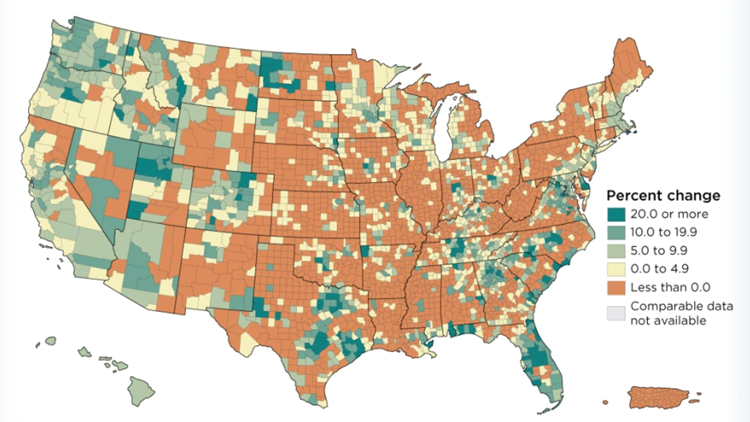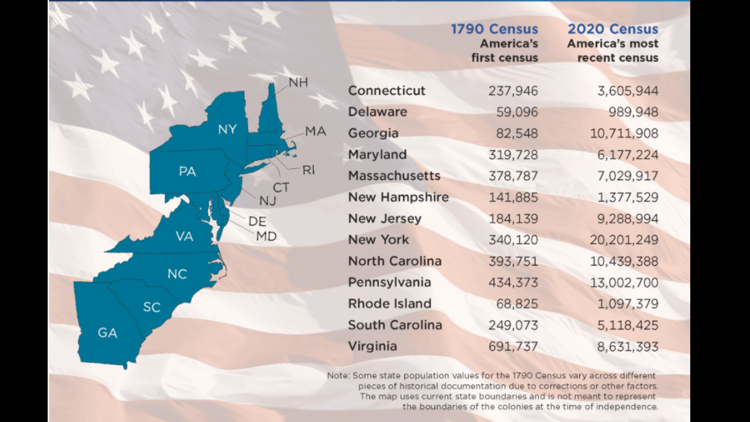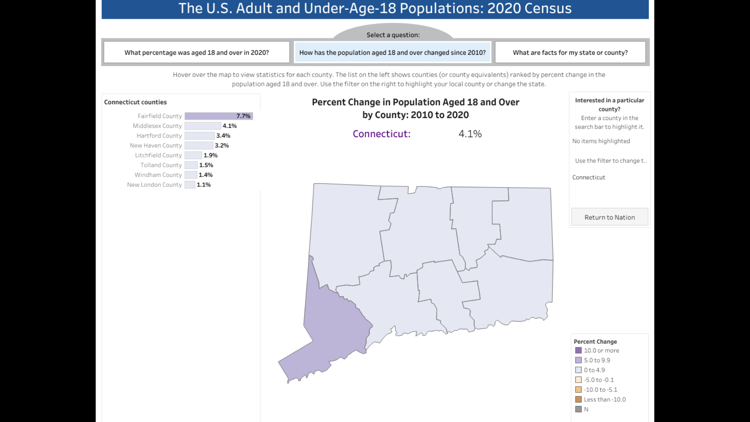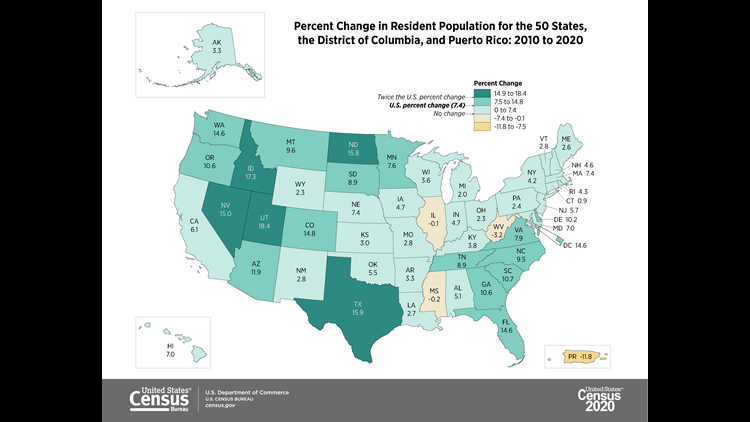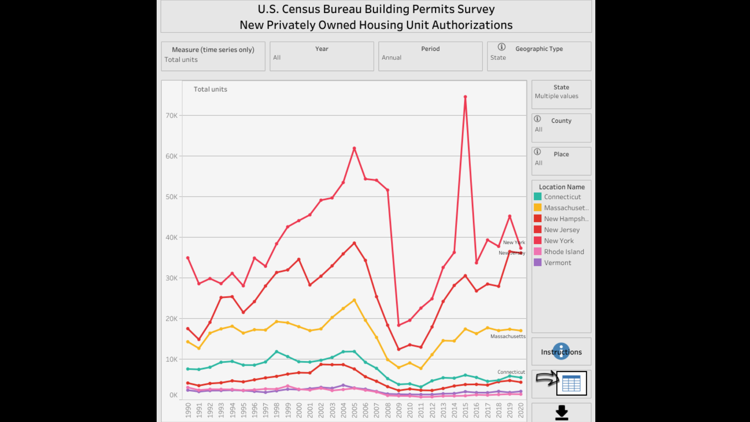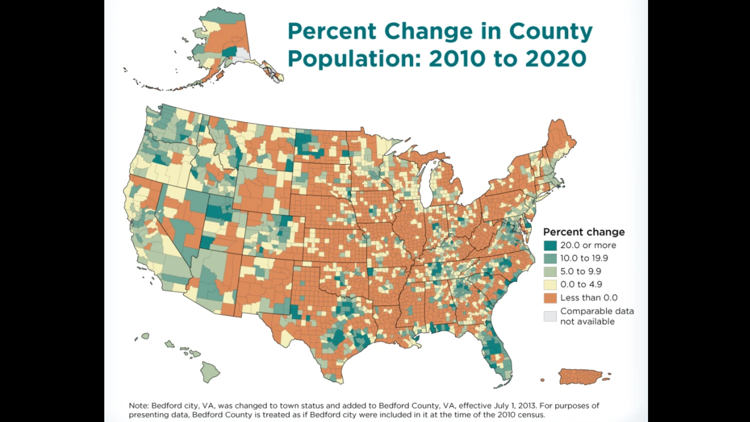CONNECTICUT, USA — For a large portion of 2020, local officials encouraged people to fill out their census forms and answer the door if census-takers came knocking. And now, the numbers are in.
The nationwide headcount shows the United States is rapidly becoming more diverse. For the first time since 1790, the white population of the country declined. It also shows a continuing trend for population growth -- that it's happening almost entirely in urban areas.
The census will help determine where and how billions of federal dollars will be spent. But its original and still primary purpose, mandated by the Constitution, is to maintain a fair representation in Congress.
Connecticut has not fared well on that account in recent decades. The results of the 2000 census cost us a seat in the House of Representatives, shrinking the state's number of districts from six down to five.
In the latest count, Connecticut's population grew by 31,847 residents, just 0.9%. That's a tiny amount of growth, but it was enough that Connecticut will not be one of the state's losing a vote in the national House this decade.
New York, Pennsylvania, Ohio, and California are some of the states losing seats. Florida, North Carolina and Colorado are among those who will gain.

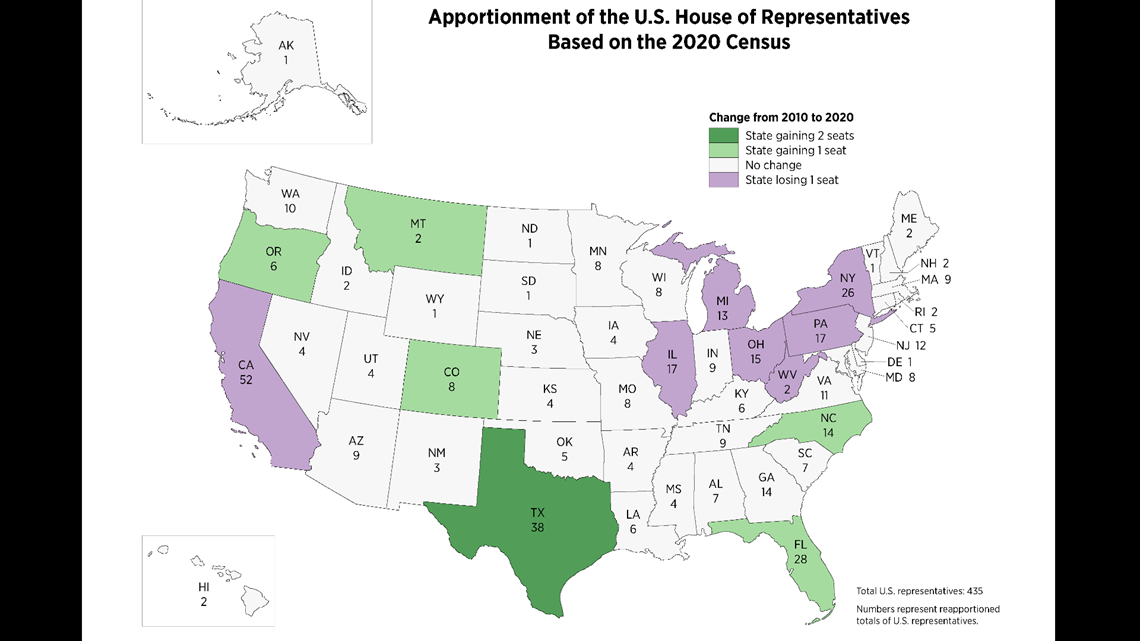
But the population data may change the boundaries of those five districts, so you might get a new congressman even without an election if you live near a district boundary. And it's used to redraw local legislative districts.
The Connecticut General Assembly has a bipartisan Reapportionment Committee, which held its first meeting back in April, and will now get down to the business of seeing what population changes need to be reflected in the districts for state senators and state representatives.
Those changes followed national trends, with growth consolidating in already populated areas, and declining in rural areas.
Connecticut's three largest cities (Bridgeport, New Haven, and Stamford) all showed population increases. And the three most populous counties, Fairfield, New Haven and Hartford, also grew, while the other five more rural counties declined.

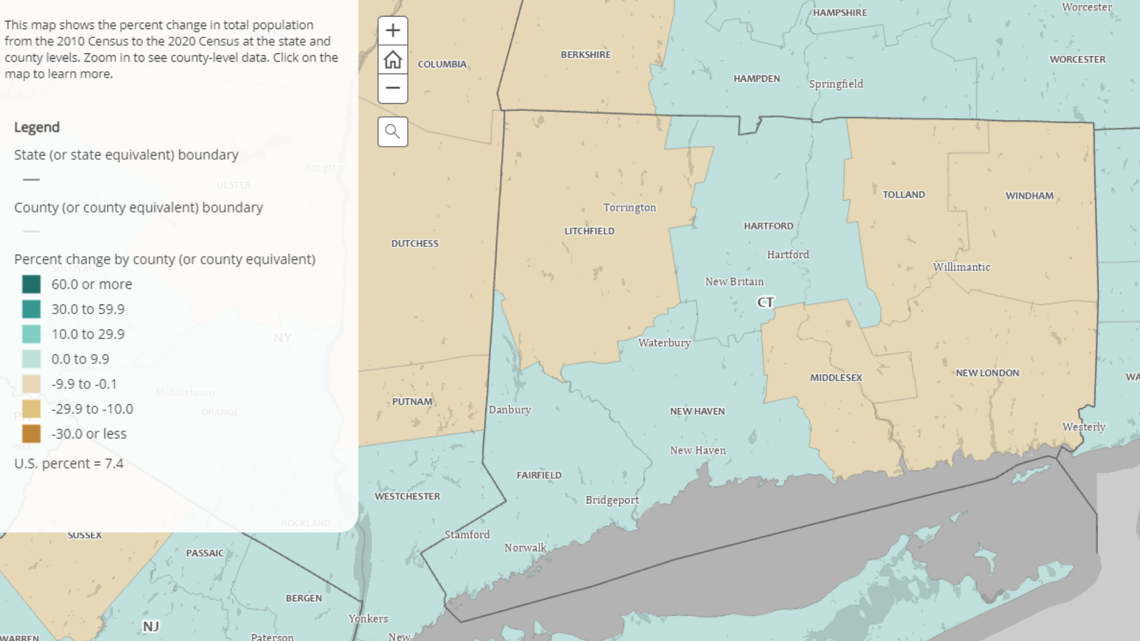
How did Connecticut do in responding to the census, to make sure it was accurate?
Lieutenant Governor Susan Bysiewicz, who was tasked with encouraging people to respond during the unprecdented pandemic year of 2020, said in a release on Thursday, "In my role as chair of Connecticut's Complete Count Committee, I was committed to overseeing the most comprehensive and exhaustive census outreach effort in Connecticut history. Today's data shows the fruits of our labor. Connecticut's count was a national leader: our 99.9% overall response rate exceeded the national average and our 70.6% self-response rate exceeded Connecticut's 2010's self-response rate of 69.5%."
Bysiewicz went on to say that "Our state's count in the 2020 census will be a critical milestone which will ensure that our state gets its fair share of federal resources. By producing the most complete count possible, the 2020 census results will bring billions of dollars in federal resources to Connecticut for education, healthcare, transportation, and more."
Data from the 2020 census
---
HERE ARE MORE WAYS TO GET FOX61 NEWS
Download the FOX61 News APP
iTunes: Click here to download
Google Play: Click here to download
Stream Live on ROKU: Add the channel from the ROKU store or by searching FOX61.


